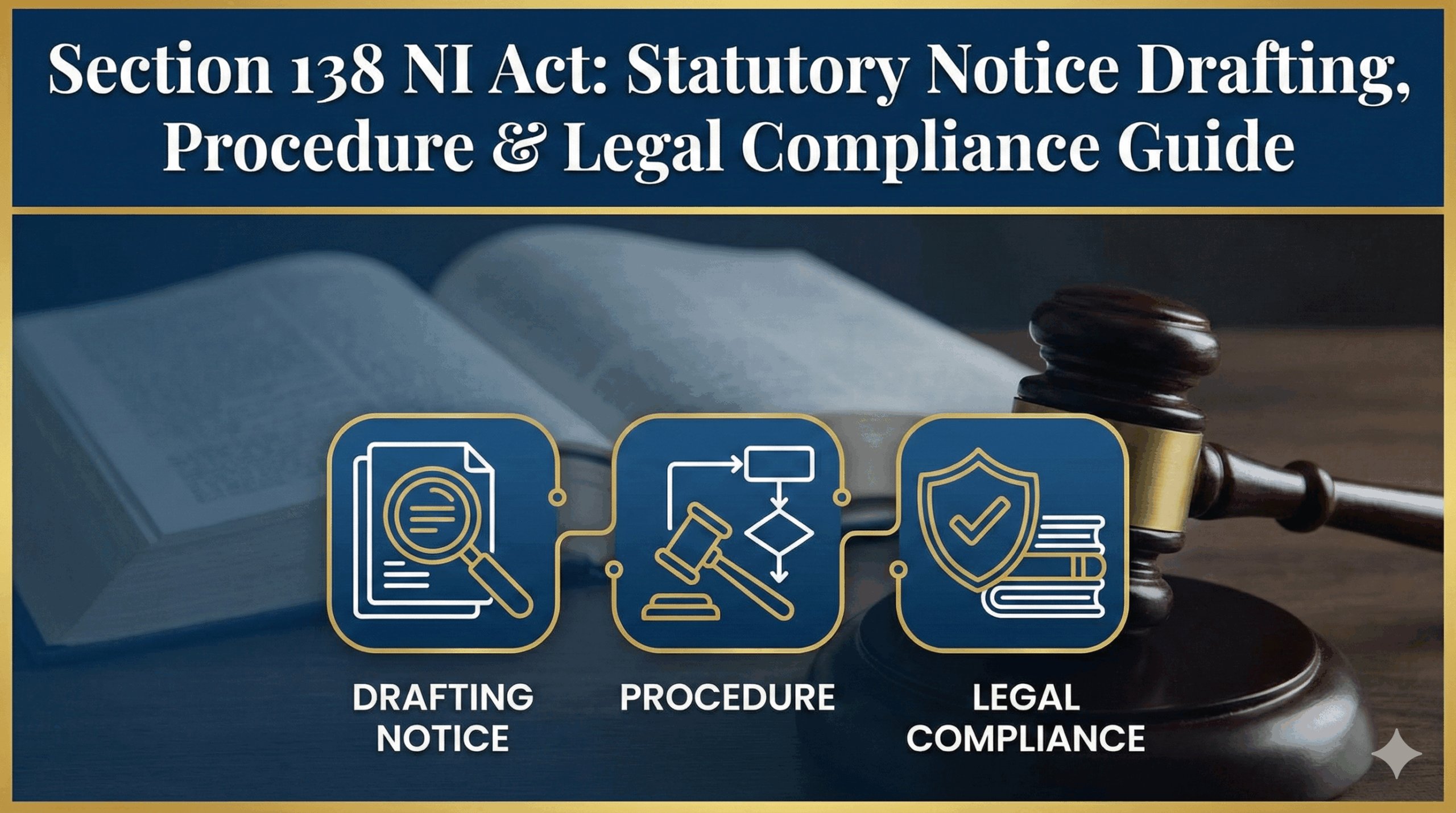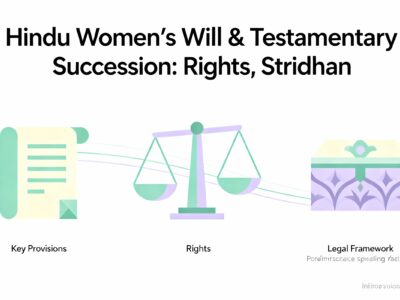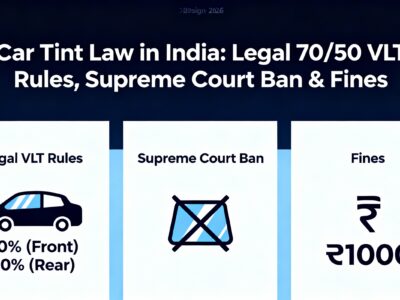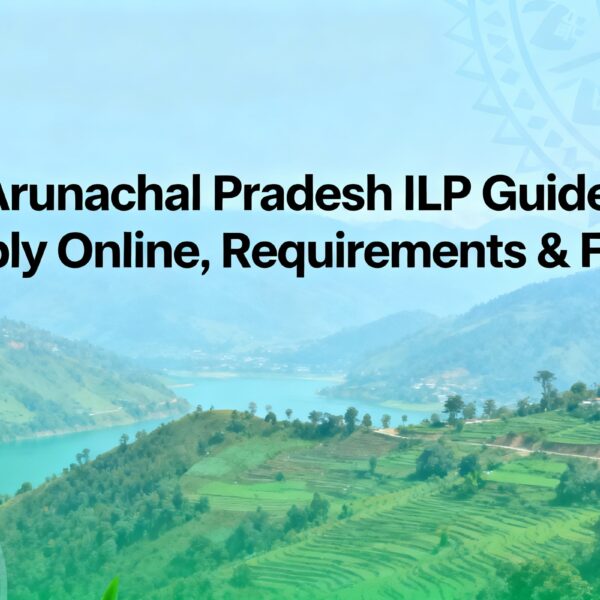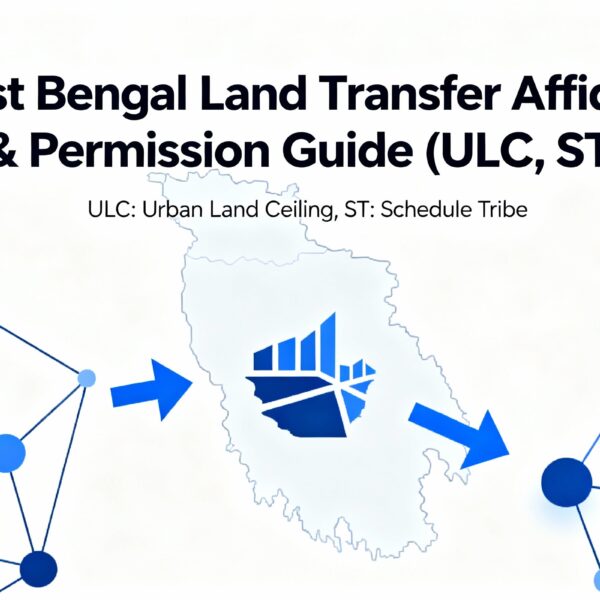Defend Your Property Title in India: Ancestral Property Claims & Legal Defenses
You followed every rule: you conducted due diligence, paid the full price, and legally registered the sale deed. Now, months or even years later, a family member of the previous owner appears, claiming a right to your property and stating they were never paid their share. This scenario can plunge any property owner into the complex world of Indian property law, forcing them to confront concepts like ancestral property claims and the Hindu Succession Act.
This comprehensive guide from Evaakil.com is your strategic roadmap through this legal challenge. We will deconstruct the claimant’s case and arm you with the knowledge to build a robust defense. We’ll explore the critical difference between ancestral and self-acquired property, detail your powerful legal defenses as a Bona Fide Purchaser, outline the step-by-step civil suit process, and analyze landmark Supreme Court judgments that could shape your case. This guide is designed to empower you with the clarity and confidence to protect your title and secure your investment.
Property Law Explained
Defending Your Title: A Guide for Property Owners in India Facing Third-Party Claims
Last Updated: September 2025
Part I: Establishing the Foundation of Your Ownership
When a family member of a previous owner challenges your property sale, your legal standing is built on the validity of the transaction. The Indian legal system provides certainty through the registered sale deed, your primary shield against such claims.
The Sanctity of the Registered Sale Deed
The cornerstone of property ownership in India is the registered sale deed. As per Section 54 of the Transfer of Property Act, 1882, the sale of immovable property valued over ₹100 is only valid through a registered instrument. The Supreme Court has repeatedly affirmed that without a registered sale deed, no legal ownership is transferred, regardless of payment or possession.
The claimant's grievance about not being paid is an internal family financial matter. It does not invalidate the legal transfer of title to you, the bona fide purchaser. The law protects the registered title transfer to ensure market stability.
Anatomy of a Valid Property Transaction
A retrospective audit of your purchase transaction can fortify your defense. Here are the key components of a legally compliant sale:
Clear Title Verification
Scrutinizing the mother deed and ownership chain ensures a legitimate lineage.
Encumbrance Certificate (EC)
Confirms the property is free from registered financial or legal liabilities.
Stamp Duty & Registration
The sale is legally complete only after stamp duty is paid and the deed is registered.
Supporting Documents
Tax receipts, Khata certificate, building plans, etc., buttress the legality.
Part II: Deconstructing the Claimant's Case
To build an effective defense, you must understand the claimant's legal arguments. Their challenge against your title will likely hinge on establishing a pre-existing, inalienable right in the property itself.
The Decisive Factor: Ancestral vs. Self-Acquired Property
The claimant's ability to challenge the sale depends entirely on the legal character of the property. The burden of proof to establish the property as ancestral lies with the claimant.
Self-Acquired Property
The owner has absolute and unfettered rights. They can sell, gift, or bequeath it to anyone without the consent of their legal heirs.
Ancestral Property
Jointly owned by coparceners (including daughters). Sale requires the consent of all living coparceners and can be challenged otherwise.
A Comparative Legal Analysis
| Attribute | Self-Acquired Property | Ancestral Property |
|---|---|---|
| Ownership | Sole and absolute ownership by the individual. | Jointly owned by coparceners of a Hindu Undivided Family (HUF). |
| Right by Birth | Legal heirs have no right by birth during the owner's lifetime. | Coparceners (sons and daughters) acquire an equal right by birth. |
| Right to Sell | Absolute and unrestricted right to sell, gift, or transfer. | Restricted; generally requires consent of all coparceners. |
| Consent of Heirs for Sale | Not Required | Mandatory |
| Legal Recourse for Heirs | Can only claim a share if the owner dies intestate (without a Will). | A coparcener can file a suit for partition to claim their share. |
The Four-Generation Rule: Defining Ancestral Property
For a property to be legally classified as ancestral, it must have been inherited and passed down through four generations of a single male lineage. This means it must have originally belonged to the great-grandfather, then been inherited by the grandfather, the father, and finally the present generation (the 'coparcener').
Crucial Point: Property inherited from a mother, grandmother, uncle, or any other relative does not qualify as ancestral property. Likewise, a property acquired by an individual through a gift or a Will is considered self-acquired, even if it comes from a paternal ancestor.
Impact of the Hindu Succession (Amendment) Act, 2005
A landmark change in Indian property law, this amendment granted daughters the same rights and liabilities in ancestral property as sons, making them coparceners by birth. The Supreme Court, in the case of Vineeta Sharma v. Rakesh Sharma (2020), clarified that a daughter's right exists regardless of whether her father was alive on the date of the amendment (September 9, 2005).
What This Means for You:
If the claimant is a daughter of a previous owner, her claim to a share in the property (if ancestral) is legally strong. The defense would then pivot not on her right to a share, but on whether the sale was valid for other reasons and on your status as a bona fide purchaser.
Part III: Your Primary Legal Defenses
Even if the claimant establishes the property was ancestral, the law provides powerful shields for an innocent buyer to protect their ownership and ensure market stability.
The Shield of the "Bona Fide Purchaser"
This is your most formidable defense. Your title is protected if you acquired the property under three conditions:
1. Bona Fide (In Good Faith)
The purchase was made honestly, with "due care and attention," and without any collusion with the seller.
2. For Value
You paid fair market value or substantial consideration for the property, evidenced by payment records.
3. Without Notice
You had no actual or constructive notice of the claimant's pre-existing right. Due diligence like checking the EC is key here.
The Sword of Limitation: Barring Stale Claims
The Limitation Act, 1963, prevents the indefinite threat of litigation. A claim can be dismissed if not filed within the prescribed time. For property possession, the period is 12 years from when the cause of action arises.
The Principle of Estoppel: The Bar on Contradiction
Under the Indian Evidence Act, 1872, the principle of estoppel can be a powerful defense. If you can prove that the claimant was aware of the sale at the time it occurred, consented to it (either actively or by their silence), and allowed you to proceed with the purchase, they may be legally barred or "estopped" from challenging the sale later. Their previous conduct prevents them from adopting a contradictory stance now to your detriment.
Defense of "Legal Necessity" or "Benefit of Estate"
Even if a property is ancestral, the Karta (head of the family) has the right to sell it without the consent of all coparceners under specific circumstances. A sale is valid if it was for a "legal necessity" or for the "benefit of the estate."
Examples of Legal Necessity
- Payment of government taxes or family debts.
- Maintenance or medical care for family members.
- Marriage expenses of family daughters.
- Performance of essential religious ceremonies.
What this means for the Buyer
As the purchaser, you are not required to ensure the money is actually used for the stated purpose. Your legal duty is to demonstrate that you made reasonable and bona fide inquiries and were satisfied that the Karta needed to sell the property for a legally permissible reason.
Part IV: Navigating the Legal Gauntlet: The Civil Suit Process
Understanding the procedural roadmap of a civil suit, governed by the Civil Procedure Code, 1908, is essential for managing expectations and preparing a robust defense.
1. Legal Notice & Reply
The process begins with a formal notice from the claimant. Your lawyer's well-drafted reply is your first line of defense.
2. Plaint & Summons
The claimant files a "Plaint" in court. The court then issues a "Summons" to you, officially starting the lawsuit.
3. Written Statement
You file a formal, point-by-point response to the Plaint, outlining all your defenses.
4. Trial & Evidence
The court frames issues, both parties submit evidence (documents, witnesses), and cross-examinations occur.
5. Final Arguments & Judgment
Lawyers present final arguments. The judge delivers a judgment, followed by a formal decree.
Seeking Injunctions to Protect Your Possession
Civil litigation can be lengthy. You can file for a "Temporary Injunction" to maintain the status quo. This court order can restrain the claimant from trespassing or disturbing your peaceful possession until the final judgment.
Exploring Faster Avenues: Alternative Dispute Resolution (ADR)
Before diving deep into a protracted court battle, consider ADR mechanisms. They are often faster, cheaper, and less adversarial than traditional litigation.
Mediation
A neutral third-party mediator helps both sides reach a mutually agreeable settlement. The outcome is collaborative, not imposed.
Conciliation / Lok Adalat
Similar to mediation but can be more formal. A settlement reached at a Lok Adalat has the binding force of a civil court decree.
The Doctrine of Lis Pendens: A Warning Sign
Governed by Section 52 of the Transfer of Property Act, 1882, this principle states that a property involved in a lawsuit cannot be transferred in a way that affects the rights of any party to the suit. Essentially, the "buyer beware" principle is heightened.
What This Means for You
If the claimant has filed a suit concerning the property, your ownership becomes subject to the court's final ruling. If the court rules in the claimant's favor, your purchase could be modified or even voided. This is why a thorough check for pending litigation is a non-negotiable part of due diligence.
The Crucial Role of Evidence in Court
Property disputes are decided on the strength of evidence. The principle of onus probandi (burden of proof) is central to the proceedings. Initially, the burden is on the claimant to prove their case, but it can shift to you to prove your defense.
Documentary Evidence
This is the most powerful form of evidence. Registered documents like your sale deed hold the highest evidentiary value and are presumed to be genuine. Courts give immense weight to them over verbal claims.
Oral Evidence
Witness testimonies are a form of oral evidence. While important, they are considered secondary to documentary evidence. Oral claims cannot be used to contradict the written terms of a registered sale deed.
Part V: Strategic Blueprint for Action
A structured and proactive approach is essential. This section provides a concrete, step-by-step action plan to build a robust defense.
Essential Documentation Checklist
Gather and organize all documents related to your property purchase. Use the filters below to explore their strategic purpose.
| Document | Strategic Purpose |
|---|---|
| Registered Sale Deed | Primary legal instrument proving title transfer. |
| Mutation Certificate / Khata | Evidence of ownership recorded in municipal/revenue records. |
| Encumbrance Certificate | Crucial to prove "without notice" of prior claims. |
| Title Search Report | Direct proof of professional due diligence and "good faith". |
| Previous Sale Deeds | Helps disprove the "ancestral property" claim. |
| Bank Statements / Payment Proof | Irrefutable proof of payment of full sale consideration. |
| Property Tax Receipts | Establishes continuous and lawful possession since purchase. |
| Utility Bills | Corroborating evidence of physical possession. |
Engaging Legal Counsel & Long-Term Strategy
- Find the Right Advocate: Engage a senior advocate specializing in property law and the Hindu Succession Act.
- Cease Direct Communication: Route all communication with the claimant through your advocate to avoid inadvertent admissions.
- Respond Formally: Ensure your lawyer sends a timely and robust reply to any legal notice.
- Adopt a Proactive Stance: Actively work to dismantle the claimant's case while building your "bona fide purchaser" defense.
- Evaluate Settlement Pragmatically: Remain open to a settlement negotiated from a position of strength that secures your title permanently.
- Maintain Undisputed Possession: Continue paying taxes and bills to reinforce your ownership.
Strategic Evidence Management
A well-organized evidence strategy is the backbone of a successful defense. Move beyond simple document collection to proactive evidence management.
-
Create a Chronological Timeline
Map out every event from your initial property search to the present day. This narrative helps the court understand the sequence and your bona fide intentions.
-
Digitize and Annotate Documents
Scan all physical documents. Create a digital folder with sub-folders for each category (e.g., 'Payment Proof,' 'Legal Notices'). Annotate key clauses in your sale deed.
-
Identify and Prepare Witnesses
List potential witnesses who can attest to your good faith, such as the real estate agent, neighbors, or bank officials who processed your loan.
Part VI: Proactive Measures for Future Property Purchases
To mitigate the risk of facing similar claims in the future, prospective buyers should incorporate additional layers of due diligence into their purchase process.
Enhanced Legal Diligence
- Public Notice: Publish a notice in local newspapers inviting any claims against the property before finalizing the sale.
- Family Tree & Affidavits: Obtain a detailed family tree of the seller and sworn affidavits from all immediate family members confirming they have no claim.
- Panchayat / Municipal Enquiry: Conduct informal local inquiries to uncover any unrecorded disputes or claims.
Strengthening the Sale Agreement
- Indemnity Clause: Include a strong indemnity clause in the sale deed where the seller agrees to compensate you for any future losses arising from title defects.
- Involve All Heirs: If possible, make all major legal heirs "consenting witnesses" to the sale deed, having them sign the document.
- Title Insurance: Consider purchasing title insurance, which is becoming more common in India, to protect against future ownership challenges.
Part VII: Frequently Asked Questions (FAQ)
Part VIII: Landmark Supreme Court Judgments
The legal principles discussed are continuously shaped by the Supreme Court of India. Citing these judgments strengthens your case and informs your legal strategy.
Vineeta Sharma vs. Rakesh Sharma (2020)
On Daughter's Coparcenary Rights
This seminal judgment conclusively settled that daughters have coparcenary rights in ancestral property by birth, equal to sons. It clarified that this right is unaffected by whether her father was alive on 9th September 2005 (the date the amendment came into force). This judgment is the foundation for most modern claims by daughters on ancestral property.
Shyam Narayan Prasad vs. Krishna Prasad & Ors. (2018)
On Burden of Proof for Ancestral Property
The Court held that the burden to prove that a property is ancestral lies squarely on the person making the claim. They must establish that the property has been passed down undivided from the great-grandfather. Merely stating that the property belongs to the grandfather is not enough to make it ancestral by default.


